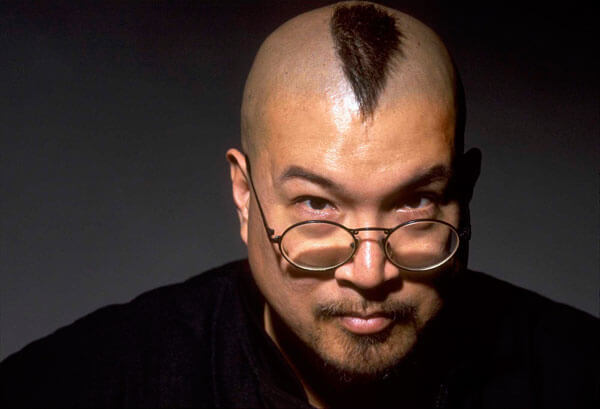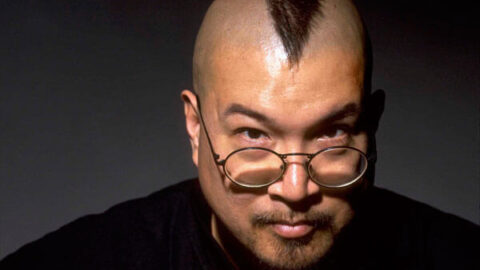 Fred Ho’s new work, The Sweet Science Suite: A Scientific Soul Honoring of Muhammad Ali seemed to channel all the energy of the composer and his Green Monster Big Band into an explosive performance. Christal Brown’s choreography brought the music to visual life, utilizing a diversity of dance styles to create just the right swagger and grace for the music. Its premiere performance at the Guggenheim’s Works and Process series this past Sunday and Monday showed its tremendous potential.
Fred Ho’s new work, The Sweet Science Suite: A Scientific Soul Honoring of Muhammad Ali seemed to channel all the energy of the composer and his Green Monster Big Band into an explosive performance. Christal Brown’s choreography brought the music to visual life, utilizing a diversity of dance styles to create just the right swagger and grace for the music. Its premiere performance at the Guggenheim’s Works and Process series this past Sunday and Monday showed its tremendous potential.

The music itself was impressive for its ability to draw in all sorts of different elements while maintaining cohesion throughout. Ho’s writing is strongly rooted in the big band tradition even while exploring avant-garde techniques and ideas. A definite sense of groove was always there, even as the meter went from 7 to 9 and other odd places. One memorable groove was a 5/4 with double-time swing – it felt off kilter but at the same time like something you could stomp your feet to. There was a definite tongue-in-cheek element, with the first selection using the Green Hornet theme, but the slapstick never went too far. The humor made the music fun, while the solid ideas and bursts of energy made one take its subject matter seriously.
Ho incorporated a number of extended techniques in a way that fit organically with the music – at one point the melody was played on an alto sax mouthpiece (no instrument) while the rest of the sax section accompanied. One movement opened with a tenor sax duet without mouthpieces – the sound reminded me a bit of a shakuhachi flute, and was a good fit for the musical material. Ho’s predilection for the low end (he’s a bari sax player) made for great moments in the trombone section and a different ensemble sound when the bari sax took the melody and the harmonization was built from the bottom rather than the top. Overall, this composition demonstrated Ho’s unique voice as a composer able to hold his own in numerous genres.
Ho’s own bari sax solo did so many things in such a short time span – from slap tongue, softer lush moments, high notes in the stratosphere, to bursts of energetic fast runs, without sounding self-indulgent. His improvisations always sounded like solid musical ideas with structure being built into the solo.

While there are a plethora of great jazz players in NYC, it’s not every day one sees an ensemble in which the sum is greater than its parts. Such was the case with the Green Monster Big Band – their sound was cohesive, they played as a unit, and the improvisations stylistically matched with the music. The quirks and technical challenges of the composition were continued in the solos – wide pitch bends in the upper register of a trumpet and alto sax solo were memorable. One trombonist in particular was well adept at soloing within the groove no matter what the meter – a punchy solo in 9/4 was particularly impressive. The hall itself presented challenges to the performers – sounds could easily get blurry as they traveled the space, and the dancers on center stages physically separated the band into three sections. Whitney George’s solid conducting helped hold things together, but at times accents would get lost, one section would be just slightly off with another, or the horns would be just a hair behind the rhythm section, and small intonation problems occurred. Such issues are par for the course at the first performance of a new and challenging work in a hall like this, and the band overwhelmingly rose to the challenges.
While I’m not equipped to provide detailed analysis of the choreography and dancers’ performance, and admittedly was more focused on the music, I will say that the dance was a perfect fit for the music and strengthened the narrative Ho was striving for. Brown’s choreography seemed rooted in modern dance while fluidly incorporating hip-hop and African dance ideas. The performance was solid while at the same time had the kind of energy one associates with improvisation.
Finally, it’s important to recognize the unique and precious place of Fred Ho in creating new music. Ho describes his compositions as an attempt to create a “popular avant-garde” – convinced that creative innovations can be combined with vernacular traditions into something tangible and challenging to wider audiences. His aesthetic is ultimately rooted in his politics – which are drawn from the Maoism and revolutionary nationalism of the 60s. The fact that he hasn’t given up on the idea that the world can be radically changed for the better and hasn’t given up on the people’s ability to traverse seemingly insurmountable obstacles to do so is evident in the energy and vitality of his music. This composition was a particular expression of these ideas, and between movements Ho talked about the inspiration of Muhammad Ali sacrificing everything for his beliefs and fighting (literally) as the underdog that wasn’t supposed to win, while the Vietnamese people were doing the same thing against US imperialism. In recent years this has taken a personal turn for Ho, who has been battling cancer. It’s clear that what guides Ho as an artist and in his fight against cancer is that he has something to give to the world, both artistically and from the perspective of contributing to radical social change. Few artists are thinking like that today. There is a great sense of optimism to Fred Ho’s music – one way to describe it would be: Beethoven, not Schubert. His unique artistic voice is not to be missed out on, and let’s hope for a full performance of The Sweet Science Suite soon.
—
David Pearson is a saxophonist residing in NYC.
























